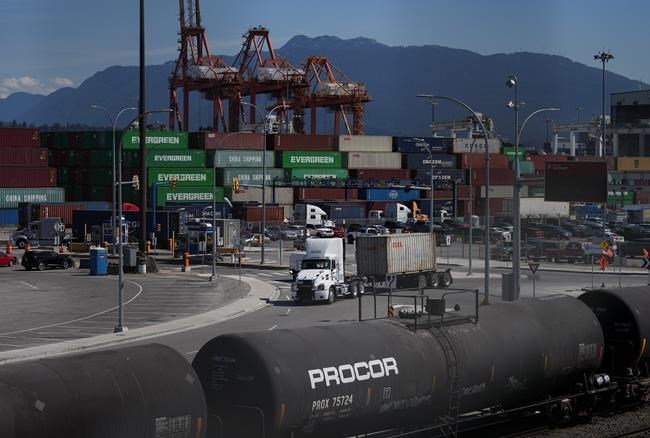
MONTREAL — Airlines and marine shippers are asking Ottawa to beef up funding for sustainable transport, money they hope will flow toward green supply chains as well as updates to existing infrastructure.
MONTREAL — Airlines and marine shippers are asking Ottawa to beef up funding for sustainable transport, money they hope will flow toward green supply chains as well as updates to existing infrastructure.
Ahead of the federal budget to be tabled April 16, a pair of transportation groups say incentive programs, loans and grants are essential to help companies reduce greenhouse gas (GHG) emissions and keep pace with other countries’ transportation networks.
Investors and would-be suppliers need incentives to start churning out sustainable aviation fuel — not a drop of which is produced in this country — to match new programs in the United States that aim to cut airplane pollution, the National Airlines Council of Canada says.
“Airlines have sent very clear demand signals they will buy every drop of SAF produced, and yet what’s missing from the equation is any sort of federal incentive or support, unlike most other western countries, including the U.S.,” council CEO Jeff Morrison said.
Typically derived from used cooking oils, animal fats or organic waste, green jet fuel shaves off about 80 per cent of a plane’s emissions.
Airlines have two main requests for Ottawa in order to foster fuel-making factories and long-term production: an investment tax credit at a rate of 50 per cent on manufacturing facilities and a production tax credit with a 10-year horizon — on par with an incentive south of the border.
U.S. producers are already eligible for a tax credit of up to US$1.75 per gallon (3.8 litres) under the Inflation Reduction Act.
Meanwhile, the Chamber of Marine Commerce says a green shipping corridor fund launched last year by Transport Canada needs a top-up to funnel investor cash toward emissions reduction. Electrification of ports, whose equipment runs mainly on fossil fuels, marks one example.
If such efforts aren’t undertaken, U.S. ports could start to draw shippers away from Canadian terminals, warned chamber CEO Bruce Burrows, who pointed to cargo vessels’ self-unloading conveyor systems, which are “very power-hungry.”
“They run off fuel on the ship, those systems which have generators and then power up the conveyor belts,” he noted.
“To electrify all of that by plugging into an electrical grid on shore, it’s just like taking your vacuum cleaner up to the dock and then you plug it into someone’s plug on the shore and you use their electricity … You’re going to have to pay for it, but it’ll be much more efficient, cost-effective and no GHGs.”
The two industry groups, which represent some of the country’s biggest airlines, ports and shippers, also want more money for broader infrastructure improvement projects, partly to keep up with the funding tsunami unleashed south of the border by the Biden administration’s US$1.2-trillion infrastructure bill in 2021.
In Canada, the government has set a goal of 10 per cent green jet fuel use by 2030 on top of a $4.6-billion program to bolster transportation infrastructure, among other measures.
This report by The Canadian Press was first published April 1, 2024.
Christopher Reynolds, The Canadian Press



